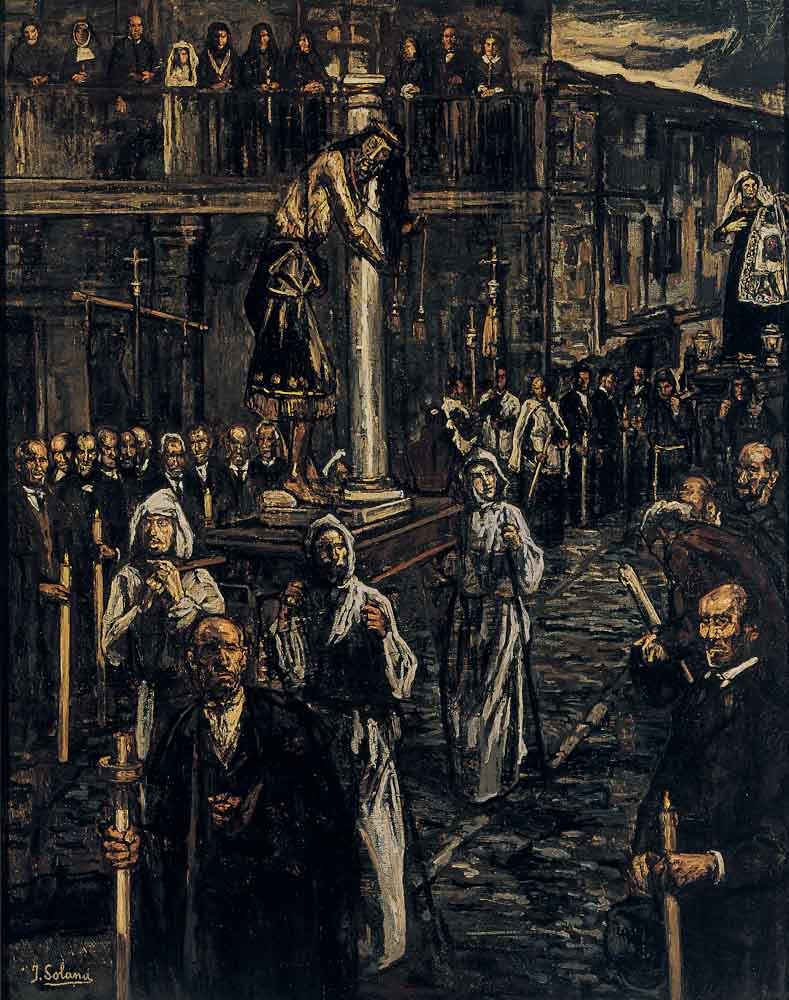
José Gutiérrez Solana (Madrid, 1886-1945)
The Procession
ca. 1917
WORK INFORMATION
Oil on canvas, 142 x 112 cm
OTHER INFORMATION
Signed at the lower left corner “J.Solana”
Solana’s obsession with religion and death finds expression in some of his harshest paintings. In these works he seems to be an individual devoid of religious sentiment and one only interested in the externally dramatic and obscure aspects of religion.
Processions and the settings in which they take place are among the most frequently recurring themes in Solana’s work. The artist presented them as spectacles of grief and piercing emotion and depicted the figures taking part either as anonymous, due to the traditional pointed hats that they wear, or as simple people with stiff, sombre faces. Nevertheless, Solana made use of the decorative elements that characterise such processions and their settings.
For Gregorio Marañón this was a virtue: “Because nothing has a religious sentiment, and above all a Spanish religious sentiment, like that of the fleeting nature of beauty, of joy, of glory; and this is precisely what is so overwhelming in Solana’s paintings […] Solana is one of those painters of the powerful and beneficial Memento Homo […].”
Ramón Gómez de la Serna drew a parallel between El Greco and Solana, not just in relation to their chromatic range but with regard to the religious spirit that Solana’s processions express, a concept that the artist himself denied: “The elements in the procession, including the processional images with the religious sculptures themselves, solely interest me with regard to their quality as figures, dolls, not for the subject that they symbolise or for the ideology that they represent [...] They interest me from the viewpoint of the figures that they are.”
In The Procession, the whites of the penitents in the procession create a brilliant chromatic contrast with the dark figures holding candles that close the composition around the central figure of Christ tied to the column. Everything is sombre: the streets, houses and even the faint dawn light, which conveys the sadness of the moment.
María José Salazar
